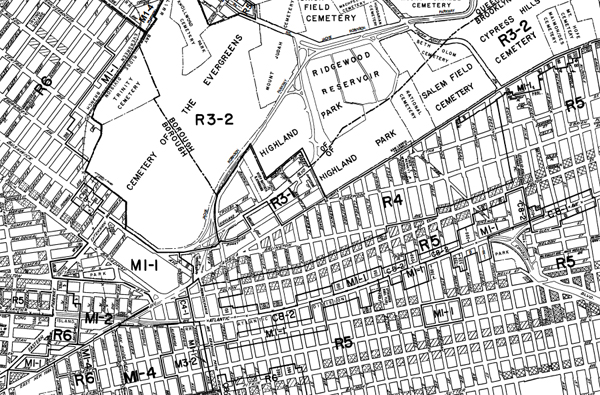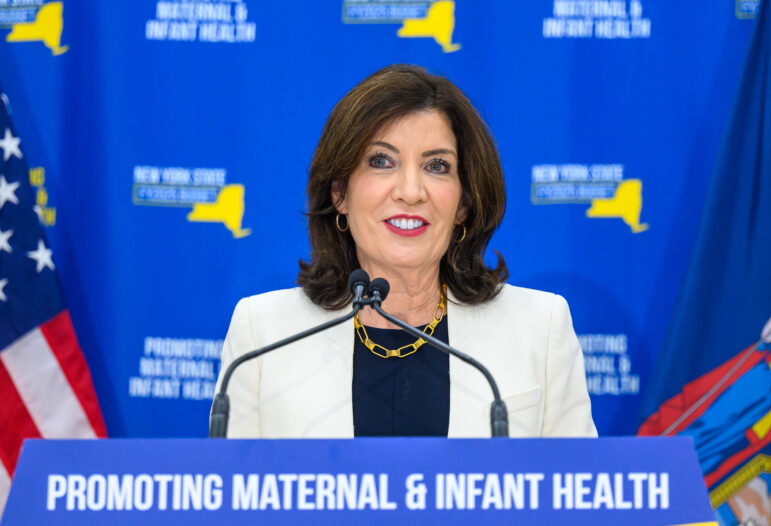
A portion of the city's zoning map.
It is too early to say what New Yorkers will remember Bill de Blasio for. Pre-K is important, the debate over education policy is obviously critical, homelessness is a very challenging tangle of problems and crime—or at least perception of its frequency—has the potential to make or break a mayor. But when it comes to the future of the city and the promises candidate de Blasio made to shape it, nothing will have more impact than the mandatory inclusionary zoning proposal that begins public review today.
The proposal (read it here), which would require substantial levels of permanent income-targeted housing when designated areas are affected by public or privately triggered rezonings, might not generate nearly as many apartments as the 50,000 de Blasio suggested it would during the 2013 mayoral campaign. Other housing policies, like the rejiggered 421-a tax exemption, could be more important in terms of sheer numbers.
But the MIH proposal is significant in at lot of ways. While New York is hardly the first city to impose mandatory affordable housing, and require that it be permanent, the 25 percent to 30 percent share of housing that the mayor’s plan would set aside for affordable housing could qualify de Blasio’s program as the boldest tried by any city.
More importantly, the proposal embodies the balancing act at the heart of the entire de Blasio approach to the affordability crisis: that the city can grow in a way that doesn’t leave low- and moderate-income people behind.
Some are very skeptical that the city can pull that off at all. Others believe the city can, but must put more stringent requirements on developers, lest the rent increases and displacement triggered by new construction drown any positive impact the de Blasio initiative registers. The points of disagreement are the same as they were during the Bloomberg administration—what percentage of apartments should be “affordable,” and what income levels are they actually made “affordable” for?—but the stakes are higher because this is a mayor who won on a promise of combating inequality.
The administration’s argument is that its requirements push developers as far as possible without making new construction impossible to finance. Their reasoning will come under a lot of scrutiny during the Uniform Land Use Review Process that kicks off today not just for the zoning proposal but also for the first neighborhood that will be affected by it, East New York.
One extra challenge de Blasio’s proposal faces, relative to the task that faced the ambitious rezoner Michael Bloomberg, is that it is still difficult to say exactly how the policy will play out in other neighborhoods. In part that’s because the planning study process is still underway in those communities—Flushing West, Jerome Avenue, Long Island City, Bay Street Corridor, East Harlem, Inwood—that the city has named. The bigger uncertainty is that we know another eight or so neighborhoods are likely to be designated “mandatory inclusionary housing areas” as part of comprehensive rezonings, but don’t know which ones yet.









One thought on “Read the De Blasio Inclusionary Zoning Proposal”
This will mean permanently taxpayer-subsided housing in unmarketable neighborhoods like ENY that will eventually deteriorate as all taxpayer-subsidized housing does.